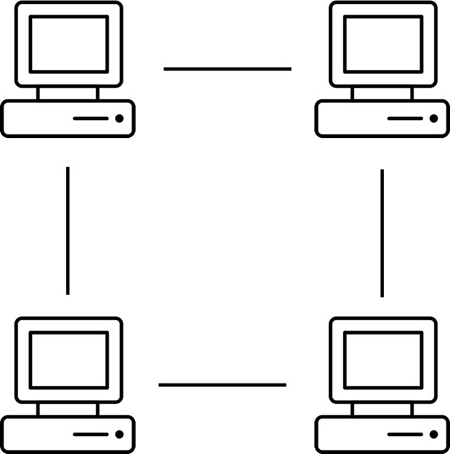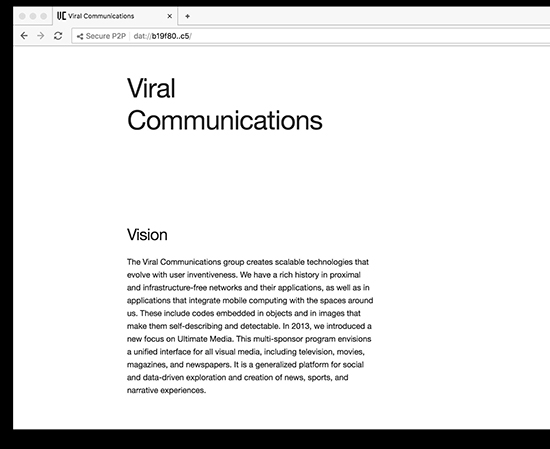Recommended

In the early days of computing, users had to save a file on a floppy disk, then carefully eject it, walk over to whoever needed the file and insert the disk into that person’s computer so they could copy it. The web tremendously simplified the sharing economy of these files, and it revolutionized the way we thought about data. From its birth, the web was designed to facilitate the free, accessible, and unsupervised flow of information across the nations, and it brought unprecedented change to the path of technological progress globally.
However, it increasingly seems that we are being locked in closed systems, while giving up access to our private data. Our data architectures are mostly still client-server based: when you access a webpage, your computer (client) has to request files from a remote server. The amount and types of Internet-enabled devices have proliferated, but the data remains stored centrally on our laptops, our phones, our hard drives, and are usually depend on a proprietary Cloud or data warehouse.
To address this, serious efforts have emerged to reclaim the independence of the web and, most importantly, of our data, by creating the necessary infrastructure from the ground up: 1. a new protocol and 2. a new browser that runs on that protocol.
The end result of these efforts is a decentralized network, where data sharing is carried out in a peer-to-peer (p2p) fashion. Every computer can be a peer, which stores all or one of your files, versus one server storing all of your files. Anyone can create and share files while maintaining full ownership and control of their data—while getting to decide which of their documents they want to distribute of course. For example, someone can decide to share their photographs with their family in a p2p way, instead of hosting them on Google or Dropbox. Maybe someone else can use a p2p network with a coworker in order to make edits to a text document. Lastly, as I will describe below, a website hosted in that way is always stored in a local machine rather than floating on the Cloud while still accessible to peers of the network. And—against the recent hype—there is no blockchain involved :)
So what exactly are these two new systems?
Dat, a new file transfer system
Dat is a system similar to git, Dropbox, or Google Drive—except it works on a distributed network as opposed to the Cloud. That means that Dat transfers files peer to peer, skipping centralized servers, and does so over an encrypted connection.
Beaker, the new p2p browser
Beaker is a p2p browser that offers the ability for users to author and serve their own websites, as well as “fork” (copy and then modify) the websites of others. It essentially relies on no third-party service—everything happens in your local machine. Every website uses dat and can be accessed by a string similar to “dat://b19f80640492951cac6a62f630fbbc67b3153ce8fba84b5f8cb1391b3154eec5/” (notice the “dat://” in the place of commonly used “https://”).
After installing Beaker, accessing the above URL points to the p2p website I made for Viral Communications, my group at the Media Lab. The files used to create this website are stored on my laptop—no need to request them from a remote cloud or server! You can access the website by typing dat://viral-communications-kalli.hashbase.io/ in Beaker, or https://viral-communications-kalli.hashbase.io/ in your usual browser. The more people that “seed” this website (the more computers that host it in a peer-to-peer fashion), the safer the network is to failure, an example of which is my laptop being stolen or completely crashing.
What is the future of these technologies?
The World Wide Web and the Internet are barely 30 years old, yet they have changed forever how we communicate with each other, how we conduct business and essentially, how we live our lives. These technologies were conceived and built to be free and open to everyone. However, as regulations on the Web’s content become stricter and cases of morally questionable data-sharing practices gain publicity, we all have to consider what data ownership means, and how we can prioritize its protection. As Tim Berners-Lee himself put it recently: “Care about your data. It belongs to you.”
Grad Life blog posts offer insights from current MIT graduate students on Slice of MIT.










